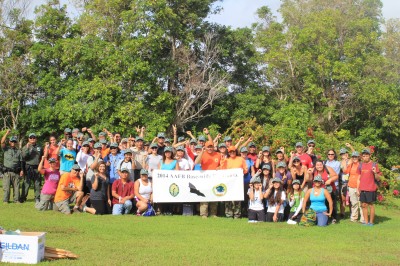
Mildenstein has over 17 years of experience studying and promoting the conservation of fruit bats in SE Asia and the Mariana Islands. She began studying fanihi, the Chamorro name for Pteropus mariannus in 2005, when she was invited to participate as a Scientific Advisor on the Mariana Fruit Bat Recovery Team for the U.S. Fish and Wildlife Service.
“The project was originally planned with 20 survey sites based on an estimated maximum 35-40 available volunteers, the community response exceeded our wildest expectations,” said Mildenstein. “Over 100 people responded to the request for volunteers. As a result, we will be able to use 51 observation stations throughout the forested regions of AAFB. This is history in the making, conducting a fruit bat survey of this magnitude,” said Mildenstein. “It is also the only way to get at an accurate estimate of the number of bats on Andersen Air Force Base. Biologists have suggested this approach in the past, but no one believed we could get this many volunteers to help. I am overwhelmed and humbled by the level of support from the community for this project.”
The Mariana fruit bat is one of two mammals native to Guam and the CNMI and is listed as Threatened by the U.S. Fish and Wildlife Service and as Endangered by the International Union for Conservation of Nature (IUCN). Threats to this species include habitat loss, roost site disturbance, and illegal hunting. On Guam, the brown treesnake is considered a major cause for the decline of the bat population.
In addition to the much-needed baseline population size data, this survey is instrumental in disseminating information about fanihi and fanihi conservation to the community.